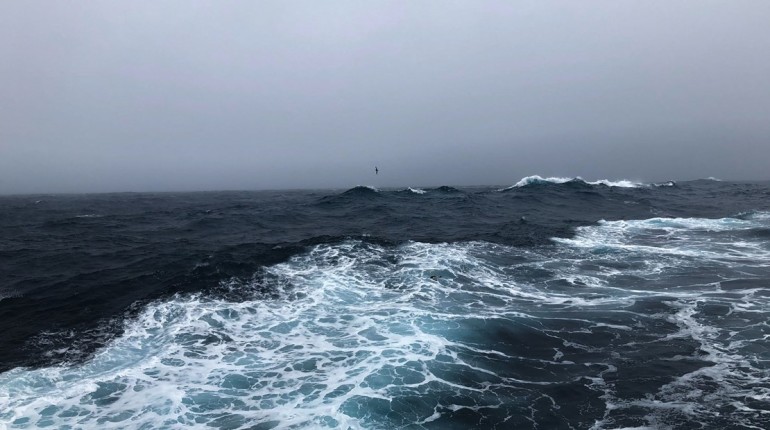Sponsored Listings:
Cruise editor Tom Stieghorst is on an Antarctic cruise with Abercrombie & Kent.
APPROACHING THE SOUTHERN OCEAN — I lack the patience that the photography instructor describes as one of the keys to getting a good shot, which is probably why I’m frustrated trying to capture the height of the waves surrounding our ship.
The bridge says the wind is blowing 35 to 50 mph, producing waves that are 20 to 25 feet tall. We’re crossing Drake Passage into the Southern Ocean on our way to Antarctica and these conditions aren’t uncommon at all.
The waves rise and fall as our small ship, the 11,000-gross-ton Le Lyrial, labors ahead. I’m on the lounge on the third deck, and at times the waves all but fill the windows, showing nothing but a small strip of sky at the top.
A little while ago, some wine glasses behind the bar came crashing to the floor. I’m trying to take photos, but I’m also trying to stay on my feet. And I’m worried that this queasy feeling in my stomach will progress towards something much worse if I don’t sit down and take it easy.
I knew in the abstract what to expect, but in another way I didn’t know at all. I’ve never been in seas this rough.
The closest I can recall was a trip across the Bay of Biscay a few years ago on the Crystal Serenity, a ship about six times the size of this one.
The ship is comfortable, and I’m not afraid or anxious. But it is unnerving to see the stern of the ship rise up 25 feet and then dip down a similar height in the course of 10 or 12 seconds.
Still, the ship doesn’t pitch much — pivoting on its center from bow to stern. It does roll from side to side. I didn’t get a lot of sleep last night because my body would not cooperate when it felt constantly that it was going to roll off first one side of the bed and then the other.
I and my fellow passengers pinballed down the corridors on the way to breakfast, grasping the hand rails and lurching from side to side trying to keep our precious balance whenever a break in the handrails required it.
For a while in the morning, the sun came out, illuminating the aquamarine colors in the sea. The wind whipped around, scraping spray off the tops of whitecaps and sending it hurtling across the horizon.
I went outside briefly, on a deck overlooking the stern. Seabirds of various kinds drafted behind the ship, and I vainly tried to identify them as petrels or albatrosses. I heard the propellers fighting to bite into the churning seas below.
They say all this turbulence arises from the convergence of (relatively) warmer waters with the Southern Ocean, which rotates around Antarctica at a rate of flow four times faster than the Gulf Stream.
Seas south of the Antarctic Convergence contain the coldest, densest water in the world. That is where we are headed.
Source: travelweekly.com










